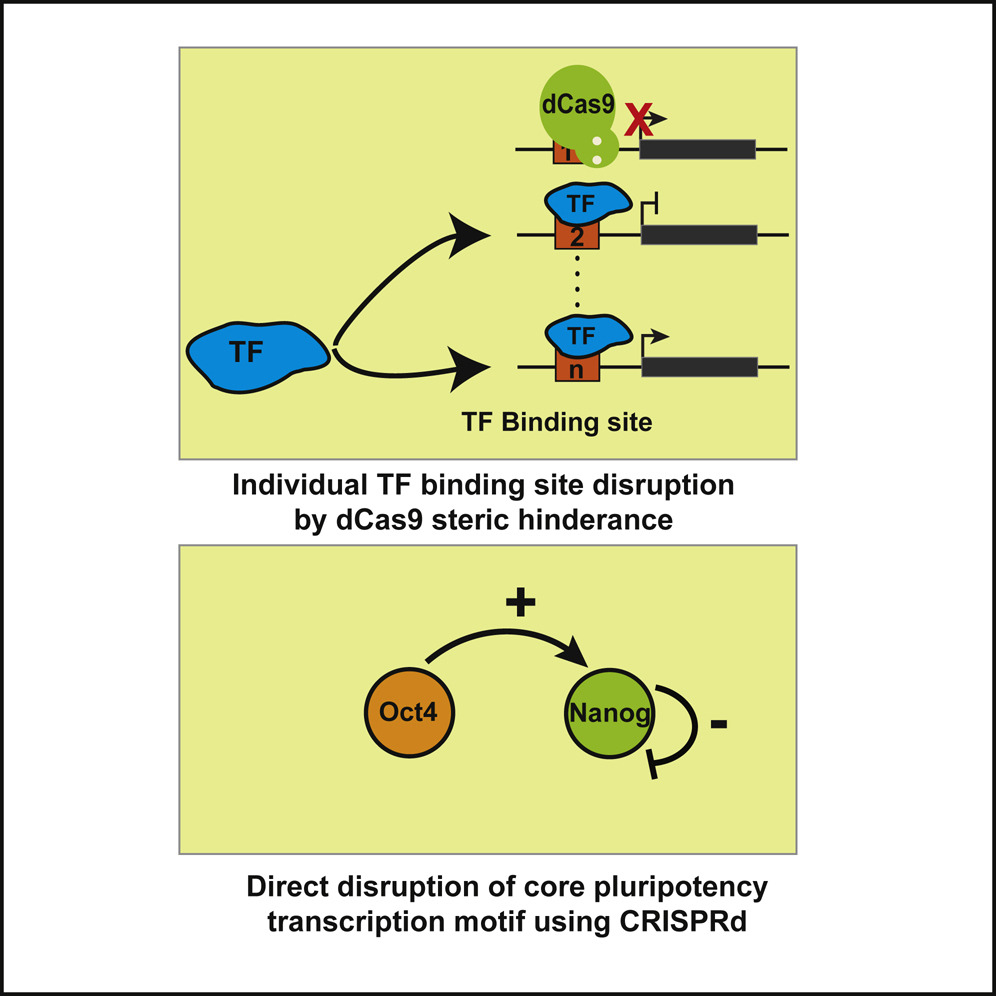Read all about it here https://www.sciencedirect.com/science/article/pii/S1097276519302813?dgcid=author
Ali shows that targeting dCas9 to specific transcription factor binding sites can be used to inhibit those sites function. Basically, dCas9 outcompetes the TF to block binding. This worked in all the cases we looked at and resulted in increased and decreased transcription depending on the site blocked. As a case study, we examined the pluripotency network in embryonic stem cells and found that an Oct4 site on the Nanog promoter drove positive feedback to maintain pluripotency, and that a Nanog site in the Nanog promoter had the opposite effect and provided negative feedback. This method can be used to individually delete links in transcriptional networks to asses their function without deleting the transcription factor hubs. It was a nice collaboration with Marius Wernig (stem cell inst) and Stanley Qi and Antonia Dominguez (bioengineering). Thanks everyone for making this such a fun collaboration.
